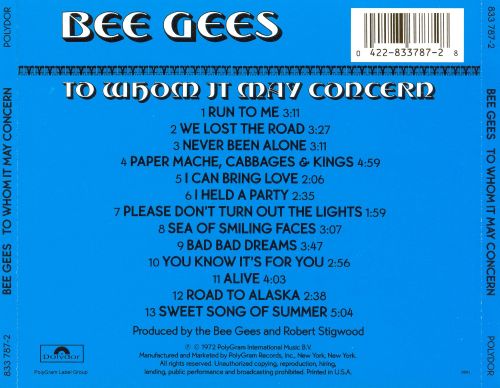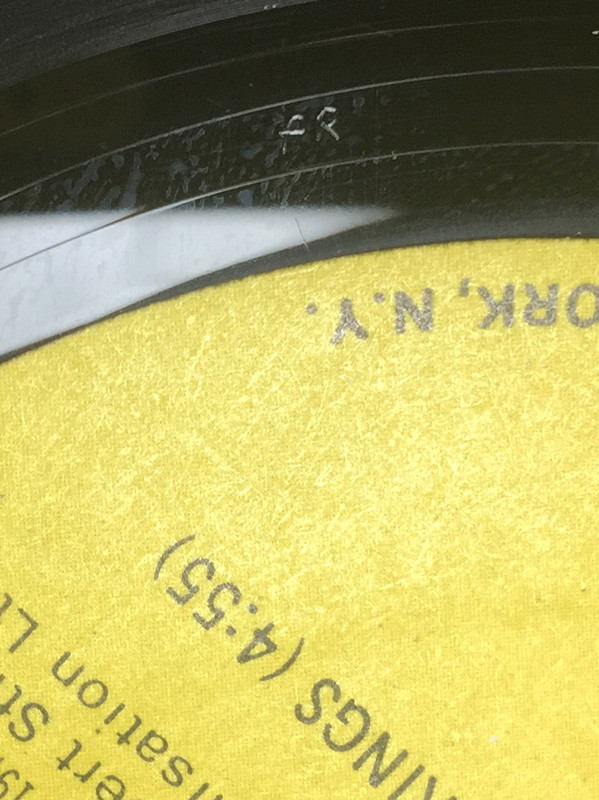

Among its many attributes, and encouraged by producer Arif Mardin, it was the song that proved to Barry Gibb that he could sing falsetto. Jumping ahead to 1975, “Nights On Broadway” was the second single from the Bee Gees’ “comeback” album Main Course. The Bee Gees’ original, from the Trafalgar album, didn’t chart in the UK, but it was a gold-selling No.1 in America, their second in a row there after “Lonely Days,” which, remarkably, was recorded on the same night. In another endorsement of the innate soulfulness of what were ostensibly pop compositions by the Gibb brothers, “How Can You Mend A Broken Heart” was turned into a soul gem by Al Green. The version he sang in August 1969, with the Sweet Inspirations and the Imperials Quartet, was part of his In Person at the International Hotel, Las Vegas, Nevada album released two months later. Glen Campbellwas an early advocate, recording it for his Wichita Lineman album, and soon it was part of the live set by the newly-liberated Elvis Presley. “Words” was their next hit, Top 10 in the UK and many other countries, and plenty of artists would hear its potential. Some band disharmony and a brief split were to come, but renewed success was around the next corner.īy 1968, everyone was listening to the Bee Gees’ songs. In that spirit, the dead-man-walking narrative of “I’ve Gotta Get A Message To You” caught the imagination of singles buyers worldwide, notably in the UK, where the single became the Bee Gees’ second No.1 in September 1968. The dramatic story song in which the narrator was facing death was a popular device of the 1960s and early 1970s (“Green, Green Grass of Home,” “Indiana Wants Me,” “I Did What I Did For Maria”).

In those heady first few months, the song topped the UK chart for a month in October and early November 1967. They proved as much with “Massachusetts,” a single whose glamorous-sounding location appealed to European fans, most of whom still only knew American states from their namechecks in popular culture. If the Bee Gees were supposedly a new Beatles, they also had harmonies that would have done the Beach Boys or the Mamas and the Papas proud. “So there is a touch of The Beatles in the early vocal harmonies,” wrote Peter Jones, reviewing the newly-heralded group’s new single for Record Mirror, “but the song is dramatic, poignant, well-written - and features an easily picked-up melody theme. The courageously stark narrative, inspired by the real-life Aberfan mining disaster in Wales only a few months earlier, gave Barry, Maurice and Robin Gibb a first Top 20 hit in both the UK and US in early summer that year. “New York Mining Disaster 1941,” released in April 1967, remains one of the most arresting debut hits to start any international career. The brothers auditioned for impresario Robert Stigwood, who in no time was talking about them as the new Beatles, and were in a recording studio by early March. But then things moved incredibly quickly. They literally performed for their passage back to England, paying for their fares by singing on the deck of the Sitmar Line’s Fairsky steamship and arriving in February 1967. There was an incubation period of four years from the first single released in Barry, Maurice and Robin Gibb’s adopted home in Australia (1963’s “The Battle of the Blue and the Grey”) to their international arrival. International Year Zero, 1967 New York Mining Disaster 1941 But this primer, overflowing with classics, sets out just some of the unforgettable music they made during a near-35-year chart heyday. Decades on from their first international success, this look at the best Bee Gees songs is a jumping-off point to a songbook that could easily stand a second list of 20, and a third, and so on. Quite simply, the brothers Gibb are up there with the greatest groups, and songwriting partnerships, of all time.


 0 kommentar(er)
0 kommentar(er)
